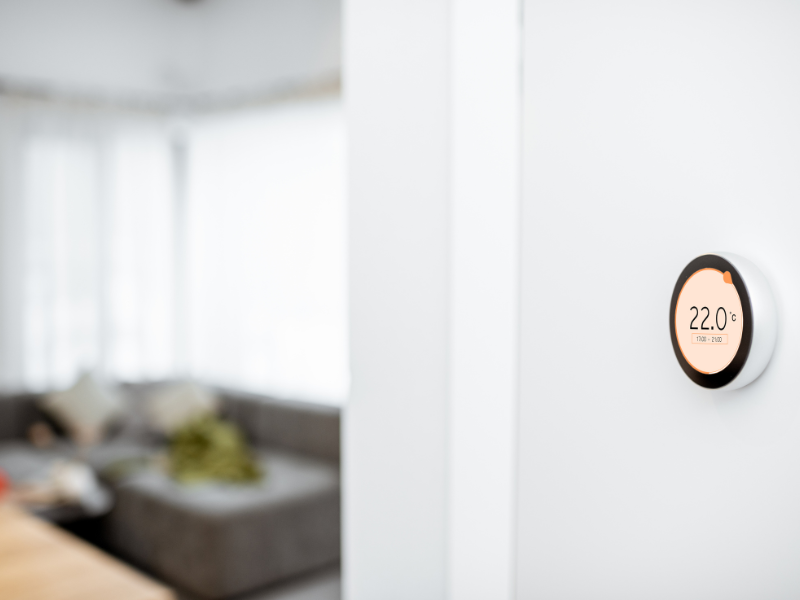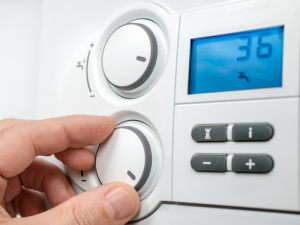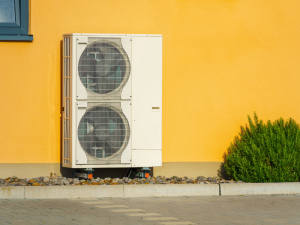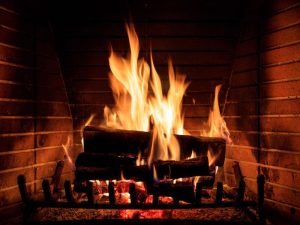When it comes to HVAC systems, the main use for them can be narrowed down to one of two features.
Regardless of whether or not it’s a small portable system or one that’s built into the entire structure of your home or business, a HVAC system will provide either heating or cooling. Many of these systems also deal with ventilation as well. While some others provide both heating and cooling, the system is still used to provide comfort during the year.
During the winter, heating and the systems that help provide it are incredibly important. Good heating is often what helps boost comfort and encourages proper sleep, especially during the fall and winter.
However, many homeowners never turn on their heaters due to the heat being more than they need during the fall season and simply just bundle up until a really cold winter day pops up. Fortunately, for people that still prefer to turn on their heating during cooler days, two stage heating is the perfect solution.
Two stage heating isn’t a widely known feature when it comes to our heaters at home.
So, to help you understand what it is, how it works and why you should upgrade to two stage heating, we’ve put together this guide.
When you’re ready for an upgrade, you can contact our team at Clover Contracting to schedule an appointment!
What is two stage heating and why is it important?
If you haven’t heard the term two stage heating before, it simply refers to the levels of output a furnace can have.
Often, two stage heating has one setting for colder days and another for milder ones. When a two stage furnace is turned on, the first stage turns on and quickly heats the home until it reaches the set temperature, then the second stage is turned on to maintain the temperatures.
However on much colder days, like during the middle of winter, the first stage of heating can be all that’s needed.
The two stage heating levels are often referred to as high and low and are often used in that manner. High is used only for quick heating and cold winter days, while low is for maintaining heat to a set temperature and for mild days.
As a result, you’ll find that your home needs to use the low setting roughly 80% of the time.
What are the 2 stage furnace benefits?
Since two stage heating often involves using the low setting for heating throughout the day, these specific units are often running for a much longer amount of time than single stage furnaces. This longer and lower capacity level of running has a number of different benefits that make it quite useful in both homes and businesses.
Quieter running
In the lower setting, two stage furnaces start off slower, where the heat that’s needed is much lower. Since this stage is often used on milder days, the heat can build up if needed and can easily be maintained. This allows furnaces on the low setting to be quieter (due to the fact it doesn’t need to blast air out quickly).
A steady and consistent level of comfort
One of the more common issues with normal, single stage heating and standard furnace systems is the temperature variations that are usually common to them. While you may have set the heat to a certain level on your thermostat, a normal heater can only “blast” the heat which leads to too high or too low of a temperature.
Even on low, two stage heating can reach a specific heat and easily maintain it, with the greatest amount of variation being one degree.
Efficient operations
One of the many benefits of the low setting and a two stage heating system is the fact that it doesn’t require much energy to run.
Standard furnaces typically use quite a bit of fuel to run before quickly reaching the needed temperature and shutting off. When the temp drops a few degrees, the furnace then kicks on again and the same amount of fuel is used.
Since two stage heating furnaces frequently run on low, the amount of energy it uses is also lower.
It uses far less fuel to reach a specific heat level before shutting off. When it’s needed again, the same low stage turns on to meet the heating demand, effectively using less energy and fuel.
The difference between single stage and two stage heating
As we mentioned, single stage furnaces have one stage of heating. They only have a single speed to blow air around and a valve that only releases a fixed amount of gas to burn. Many furnaces are single stage systems.
Two stage furnaces, on the other hand, have two stage gas valves and a blower that adjusts the air’s speed. This allows the furnace to use lower amounts of fuel at lower air speeds when needed.
Is investing in a 2 stage heating system worth it?
As with many HVAC systems that have newer features like variable speed blowers, a two stage furnace is going to cost more at the time of purchase. The good news is, though, that you can easily make that money back when heating your home. You can save a significant amount of money by using the lower setting, which uses less energy and fuel.
Additionally, since the low stage is used to maintain temperatures, your furnace doesn’t need to repeatedly turn on and blast the heat. On milder days, the heat will run at 70% of the energy that’s used on higher heat levels. This means that you and your home gets a steady and efficient amount of heat at a much lower energy usage as well.
Takeaway
Two stage heating is a great option for heating a home.
While it can be running for a much longer time, the decrease in energy and fuel use makes sure that you get a steady amount of heat that’s not going to make a big dent in your wallet.
Thanks to this lower energy use, you can also save money in the long run, especially with a two stage heating thermostat!
Best of luck with your HVAC system!








